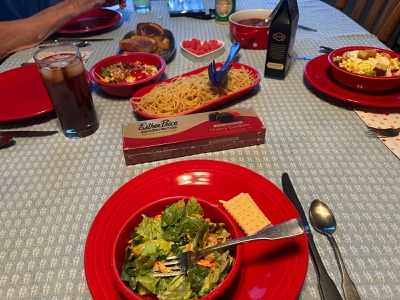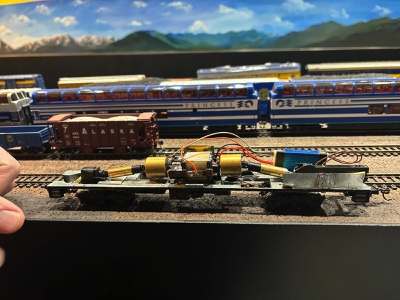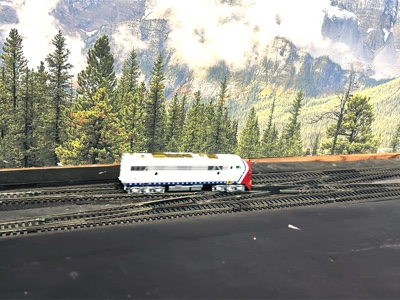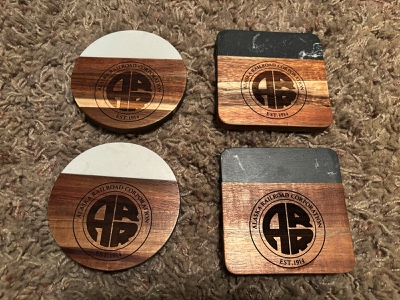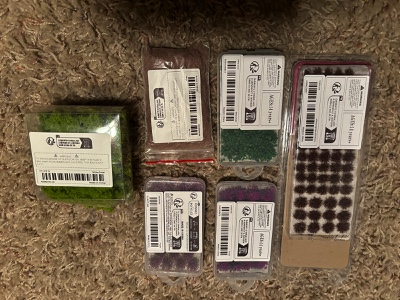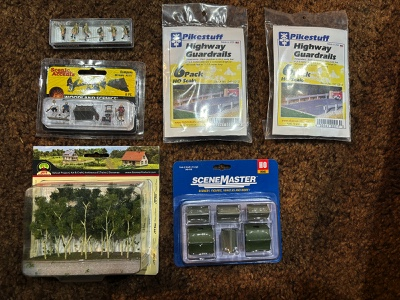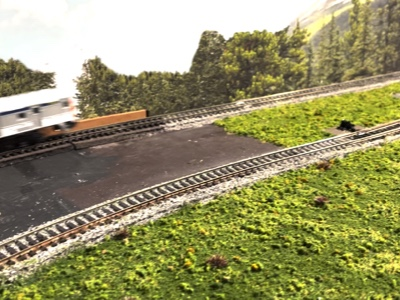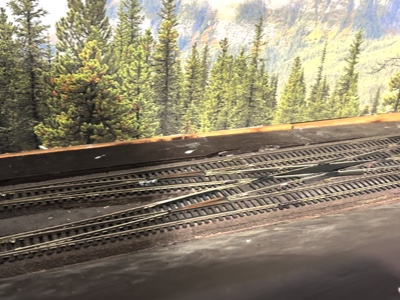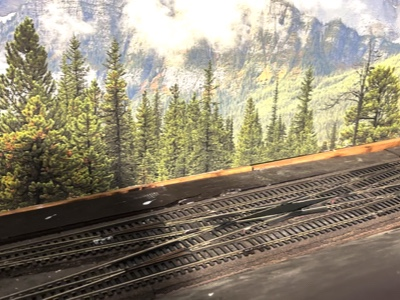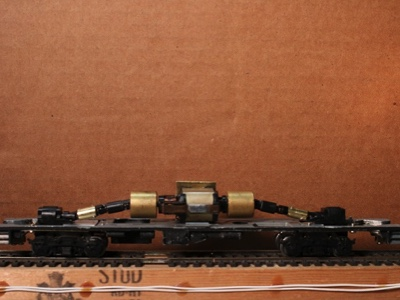
|
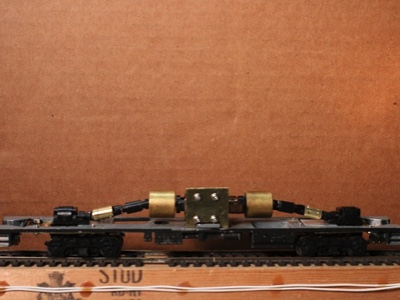
|
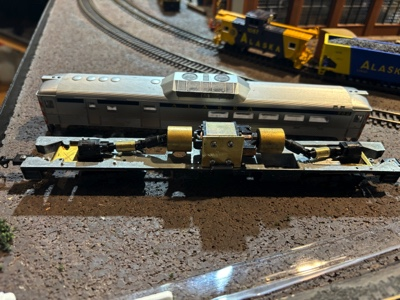
|
Changing the RDC from rubber band to motor driven took a bit of time and effort. Rick used copper tubing to reduce the flexing between drive shaft couplings. |
The motor was secured in place with a metal L bracket. Drilling the four holes in the exact locations proved challenging as well. |
The test run was less than desirable. Rick will remove the short copper tubes and put in a longer ones in hopes there will be less flex in the couplings. |
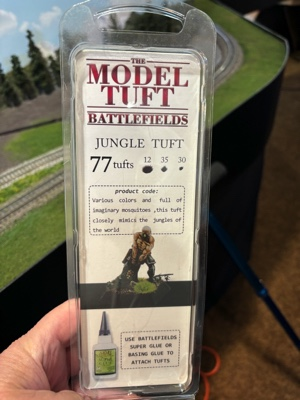
|
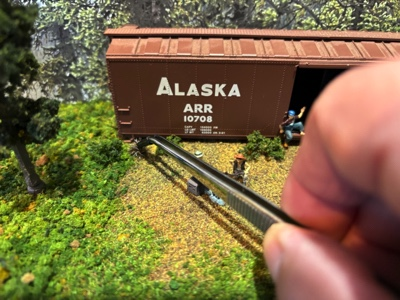
|
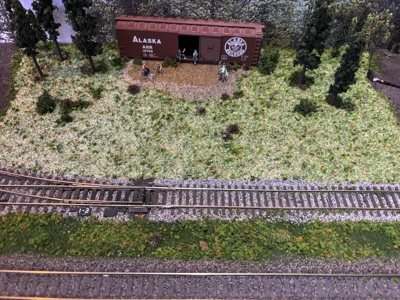
|
John continued with work on Rudd Spur. He bought grass tufts through Temu with plans of placing them throughout the layout. |
The first placement of tuffs was at the hobo camp. Several were placed around the boxcar. | More tuffs were placed in the surrounding area. John then added a three-to-one mixture (water to Modge Podge) over the grasses. This will dry clear and provide a "grandson proof" toughness to the scene. |
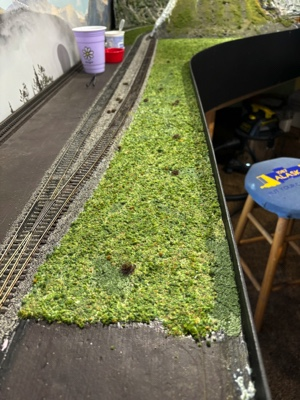
|
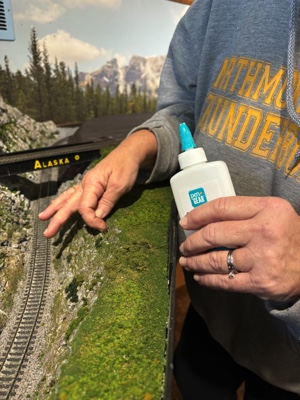 |
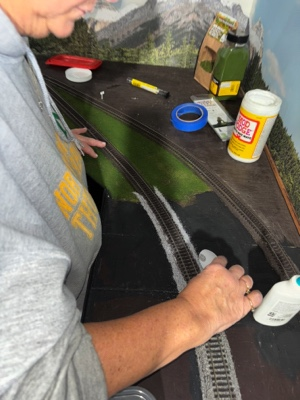 |
| John added tuffs to the west side of Rudd Spur. Using pipettes donated by Rick, John applied the three-to-one mixture to the entire area. | Terry got into the spirit of things and added tuffs in many of the scenic area. Here she adds a few tuffs to the canyon subdivision. | Terry tried her hand at track ballasting. Clayton's Alaska Railroad uses the ballasting technique by Jon Godwin and Terry proved very adept at the job. Through her efforts, she finished ballasting the section between Eppley's curve south to Rudd Spur. |
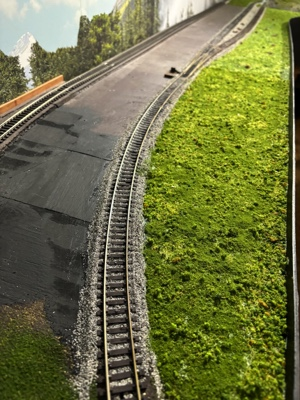 |
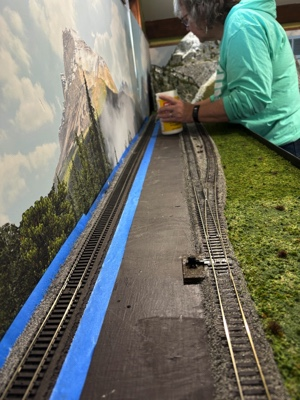 |
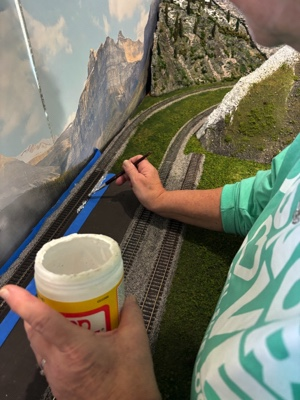
|
| Terry's finished product looked great! | Next, John and Terry tackled ballasting the eastern mainline. John applied painter's tape to both sides of the rail. | Terry applied Modge Podge to the track profiles. |
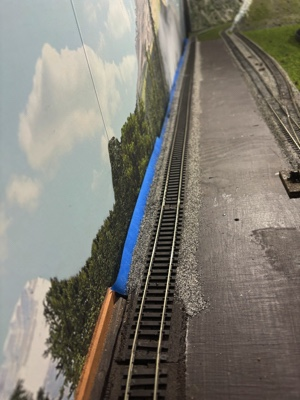
|
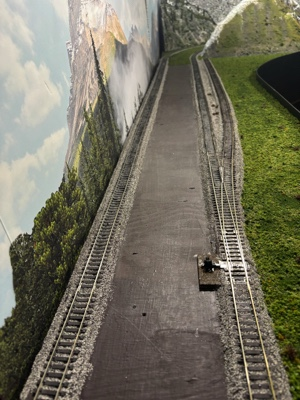 |
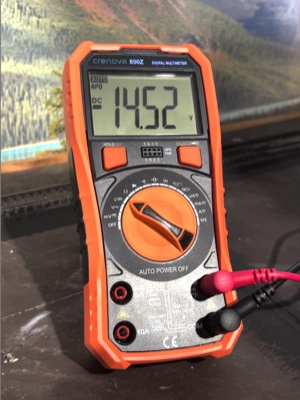
|
| Ballast was then applied to both track profiles. | Finally, ballast was applied to the tops and between the rails. The three-to-one mixture was applied using the 12 ounce clear squeeze bottle donated by Tom Koole. The final result looked great. | Video: Rick continued to trouble shoot the power drop/polarity reversal at the double crossover. After a few locomotive runs the suspect area was identified as the crossing between southeast to northwest. |
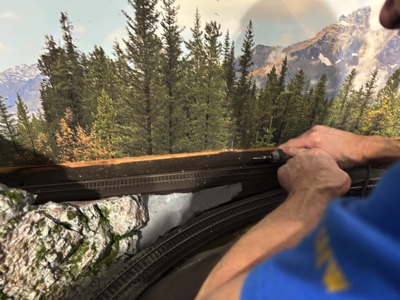
|
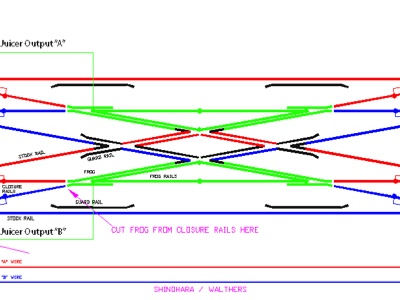 |
|
| The rail resistance between the loop and double crossover segments should be zero. Rick did not find this to be the case so he used his Dremel to expand the existing cut. However, this did not correct the problem. | Rick spent the entire train night chasing the problem without success. He plans on studying the wiring diagram for the Shinohara Crossover Switch over the next week to look for possible clues. |
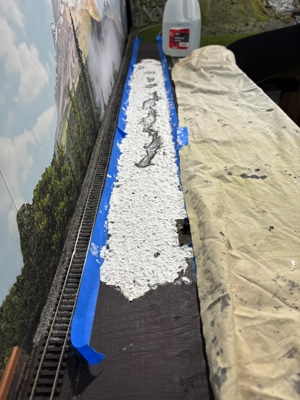
|
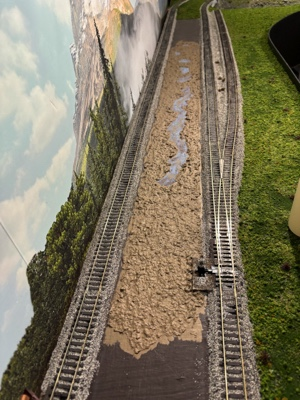 |
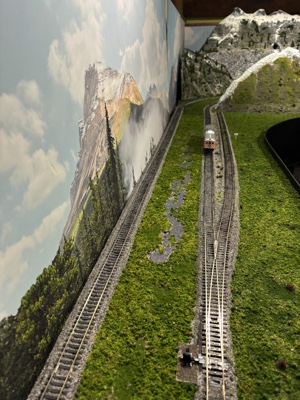 |
John spent three days working on the east side of Rudd Spur. First, he used painters tape and drop cloths to protect the track. This turned out to be vitally important as laying down the Sculptamold base was messy. |
Next, John painted the Sculptamold with a base coat of brown. The marsh water sections were painted blue followed by a dry brushing of brown. Once dry, all painters tape and drop cloths were removed. |
Scenic Express Green Flock & Turf served as a realistic tundra landscape. Realistic water mixed with three different paint colors provided the perfect steely appearance of Alaskan marsh water. |
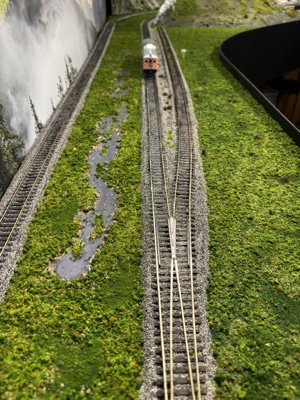 |
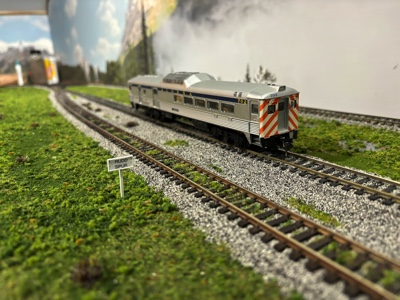
|
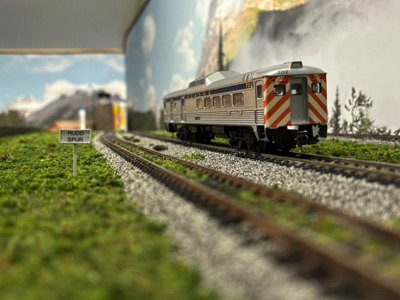
|
The basic scenery is now complete. Later on other more subtle scenery items will be added. |
Curt Rudd's favorite locomotive is an RDC as it provided many fun trips for the family to their remote cabin. Shown here is RDC 702 at the siding next to Rudd Spur. | John sent photos of the scene to Curt Rudd who responded, "JC, you make me proud!" |
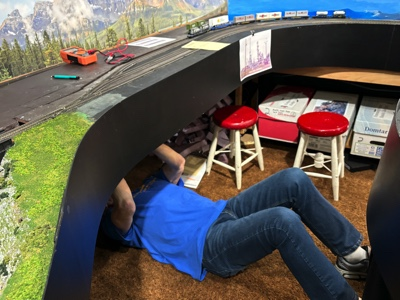
|
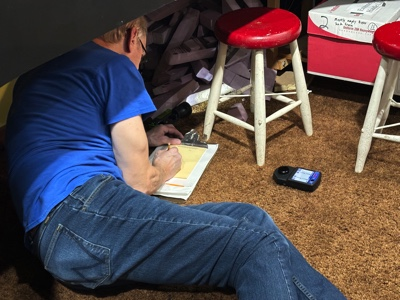
|
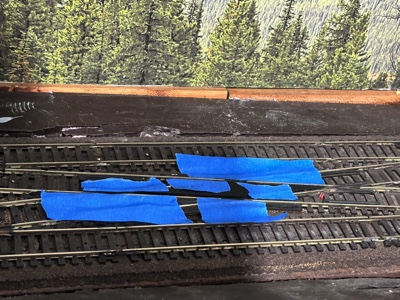 |
| Rick continued his effort to locate the locomotive pause at the double crossover. Shown here, Rick works directly beneath the double crossover checking wiring, voltages and resistance. | Documenting all the parameters is vitally important. Details matter! Rick confirms the top of the diamond is wired desperately from the bottom diamond. The same is true for the left and right diamonds. | Now after several weeks of analysis, Rick finally discovered the pause is caused when the wheels come in contact with the adjacent part of the diamond. He used painters tape to prove his theory. |
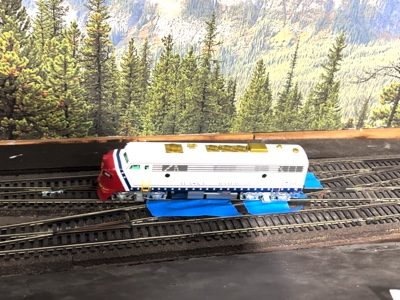
|
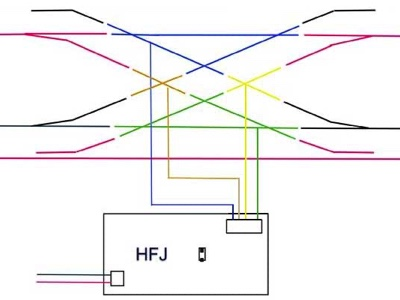
|
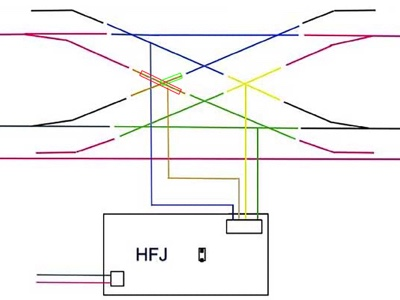
|
| Video: This video confirms Rick's theory. Rick found multiple solutions on the Internet. This included coat the offending area with nail polish or a more robust coating with JB Weld or adding light bulbs to limit the voltage. Another modeler spelled this out in page 9-10 of this document. | To help clarify, here is the typical electric connectivity of the double crossover. | Rick discovered as the locomotive touches the part in the red rectangle, it also briefly touches the part in the green rectangle thus causing the short. Stay tuned to see what solution Rick decides to employ. |
